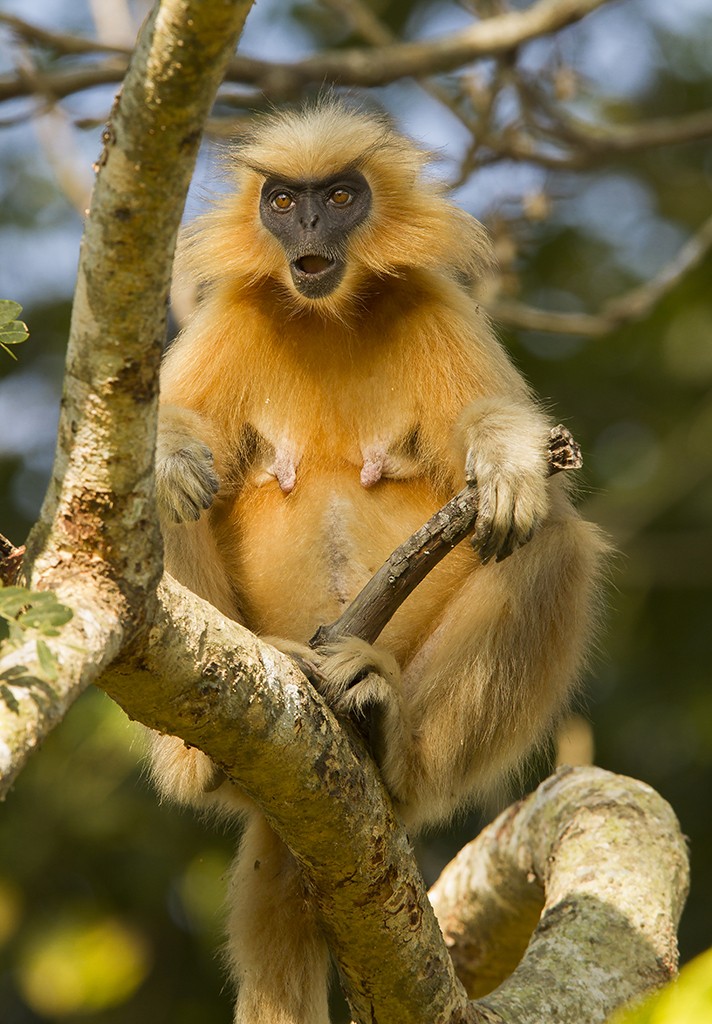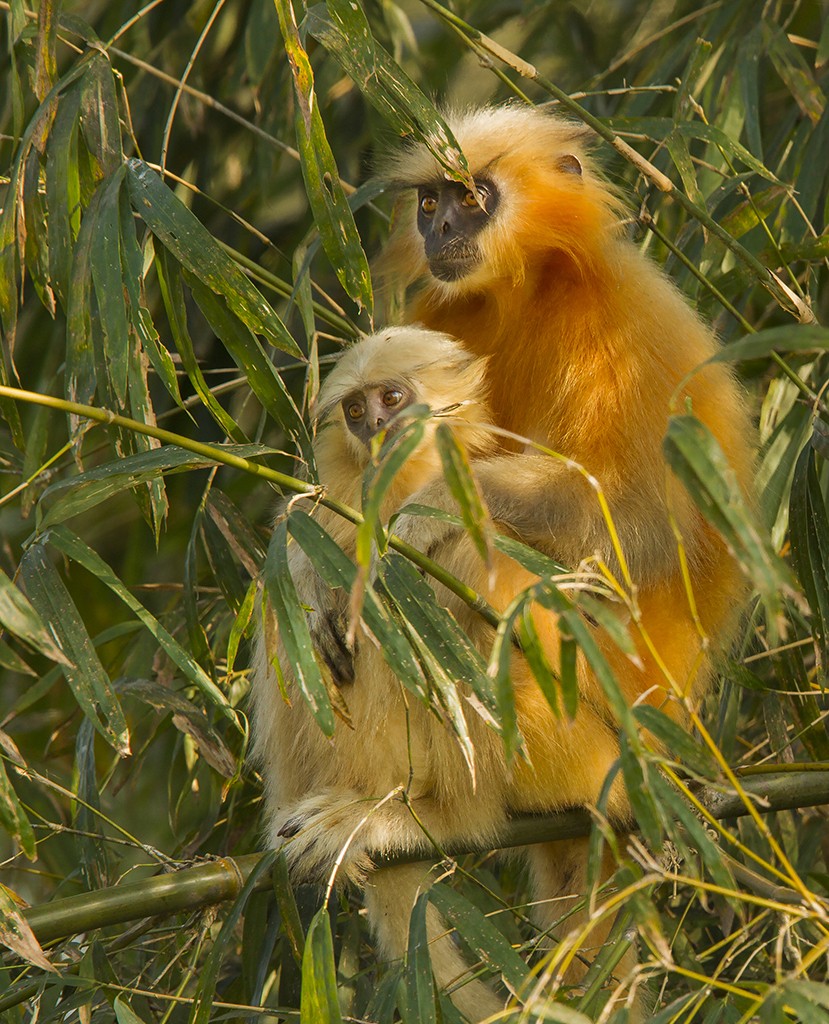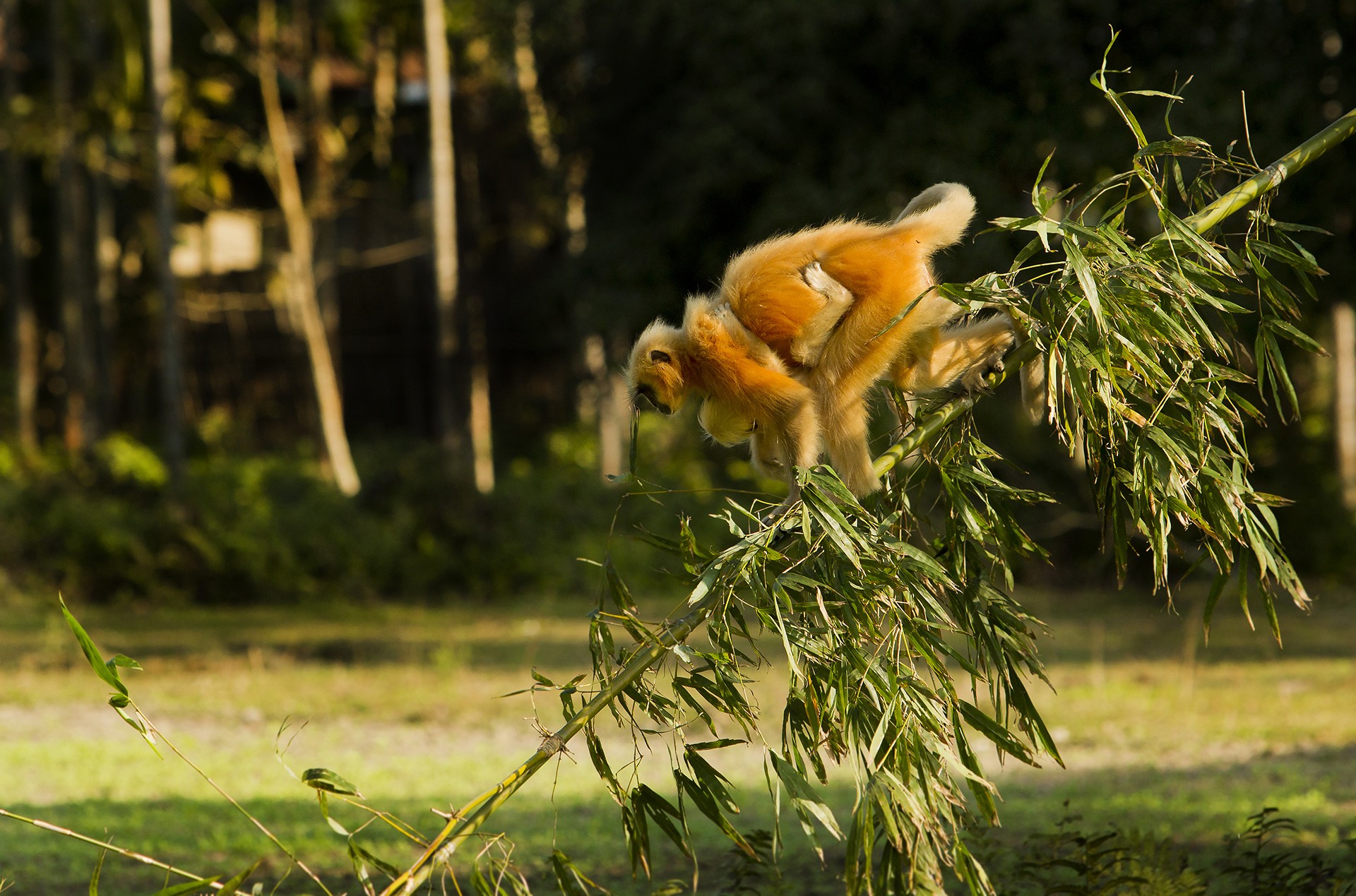“Dada, eiyat hunali bandor kot dekhi puwa jaye? (Brother, where can I spot a Golden Langur?)” I asked the forest guard.
I visited Manas National Park, Assam, early in December last year, hoping to spot this rare species and came away learning about a wonderful community conservation program to protect Golden Langurs, not far from the national park.
The Golden Langur, also known as the Golden Leaf Monkey, is an Old World monkey discovered by EP Gee, a naturalist and tea planter in Assam in 1956 (many species in the more remote parts of the north east of India were discovered as late as the 1900s; some are still being discovered to this day). The Zoological Survey of India named it Trachypithecus geei — Gee’s Golden Langur.
Assam is blessed with rich alluvial fertile soil nurtured by the mighty Brahmaputra and its tributaries, is flanked by the Himalayas in the north, contains some of the most amazing, biodiverse forests, and is home to the Axomia people. Golden Langurs are endemic to a small region of western Assam (including the Manas Biosphere Reserve) and the neighbouring foothills of the Black Mountains of southern Myanmar.
This species’ population has greatly depleted (by more than 50 per cent in the last three decades — their population contains lesser than 2,500 mature individuals; and none of the sub-populations contain more than 250 langurs). There are several reasons for this. One, a limited and fragmented habitat range: the southern population is completely separated from northern population. Two, deforestation: since the early 1990s, in just over 15 years, one half of the forests of western Assam including 2,85,000 hectares of the Manas Biosphere Reserve was deforested. And three, a complex political situation since the 1990s: militancy in the forests, threats to the Assam Forest Department staff, and ethnic violence.
In Assam, Golden Langurs also inhabit a number of island fragments south of their main habitat range — like the Kakoijana Reserve Forest, Chakrashila Wildlife Sanctuary and Nadangiri Reserve Forest.
The Golden Langur Conservation Project was set up in the late 1990s with the goal of protecting the species within the Indian border by involving local communities. This has resulted in an increase of the Indian population of Golden Langurs from 1,500 in 1997 to 5,600 in 2007 to 2012. Community Conservation, an American conservation organisation, currently works with the Assam government on reforestation programmes and to improve community education about conservation. The project, however, I was told, largely owes its success to the community.
The next morning I met Sanjeev Ray, the Kakoijana village community head, at outskirts of Bongaigaon (37km from Manas National Park). He took us to the village and introduced us to the conservation efforts by the villagers. Thirty-four tribal villages came together in 1998 to create two federations — the Green Conservation Federation and the Nature Guard — to jointly protect these forests. Initially, the Kakoijana Reserve Forest (spread over an area of 17sqkm), as well as several other isolated reserve forests were almost completely devoid of any forest cover and had no corridors connecting them. The few Golden Langurs here were forced to live on the ground due to lack of adequate canopy cover. The communities got the wheels rolling; set up tree nurseries and a reforestation programme in consultation with the village elders, planting indigenous, fruit- and seed-bearing trees. Each village adopted and protected a specific area and reduced its dependency on the forests, adopting alternate means of livelihood.
By 2008, the first signs of success were visible — forest canopy cover had increased from five per cent to over 80 per cent, leading to a significant increase in the Golden Langur population as well. In the next few years, small groups of langurs wandered out looking for new homes and were discovered three months later in another isolated reserve forest. The community has, since then, taken up strengthening corridors between these isolated forest patches.
Sanjeev then told us that a small troupe of seven to nine Golden Langurs was in a field close by. We walked through the villages with him and a few trackers. The trackers monitored the movement of the langurs and kept a daily count, and could identify troupes and their individuals.
While villagers tended to their crops, the langurs fed in the bamboo bushes nearby. They had, we were told, come to recognise that these people posed no threat and thus were quite at ease. As we got busy photographing the langurs, Sanjeev spoke of introducing an eco-tourism model in the area, so the villagers could benefit economically and further their efforts towards conservation.
Their initiatives have not just helped strengthen the Golden Langur population, but also brought back a lot of avian and mammal fauna to the area. These forests now support many Schedule-I endangered species, not to mention the Pangolin, the Marbled Cat, leopards, the Binturong, and the Flying Squirrel.



